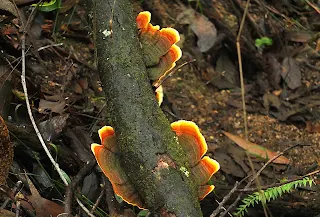In early times, much of western Europe was
covered with dense oak forests.
Many old oak trees took on characteristics
that were often the origins of myths and folklore and many splendid specimens were given anthropomorphic names in
recognition of famous people or events.
Little wonder that early European arrivals
to West Gippsland were keen to continue their long-held connections to this
iconic tree species. In the streets and parks of Drouin to this day we reap the
benefits of plantings of some magnificent oaks by early settlers to the
district.
Oak Street in Drouin is named in
honour of the old oak trees along the south west side of Oak Street
Kindergarten. The trees are thought to have been planted early in the 1900s to
provide shelter for the livestock in the sale yards which were located in this
triangle of land. In the 1936 aerial photographs of Drouin these oaks look like
they could have been about 20+ years old. These saleyards were the central
yards for farmers around the district and livestock were walked into town by
farmers from places like Drouin West. The close proximity to the train station
meant that livestock could be freighted easily by rail.
Oak Street Kinder was established
in 1964. In Keith Pretty’s book, Buln Buln to Baw Baw, he says: “This
Kindergarten has an almost unique ‘oldworld’ setting with its beautiful old oak
trees which provide valuable learning experiences for the children. They learn
from the acorns, the birds and the animals (possums) which are there because of
the trees”.
Many
children, now adults, who attended the Kindergarten remember taking home
pockets full of acorns! At least one family even has an oak tree grown from one
of these acorns and it is most likely that the oak tree on the southeast side
of the railway bridge could also be an offspring!
Today there are four remaining
English oaks, Quercus robur, three in
the Kindergarten grounds and one just to the west of the kinder boundary. They
are 18-20m high with 20m wide canopies, providing wonderful shade cover for
preschool children, the birds and the cars parked in the street in summer, and
more than ample mulch for the kinder and JC Wells park in autumn. They are
truly splendid specimens.
Perhaps in the future, some of Drouin’s
magnificent oaks will be ‘honoured’ in the same way many of the European
ancient trees are today.
(Thanks
to Judy for this post)
PS: Whilst the Pedunculate Oak is not
considered highly as a habitat tree, some Little Ravens, (I think), and some
Pied Currawongs were busy feeding on lichen on the branches in the canopy.















